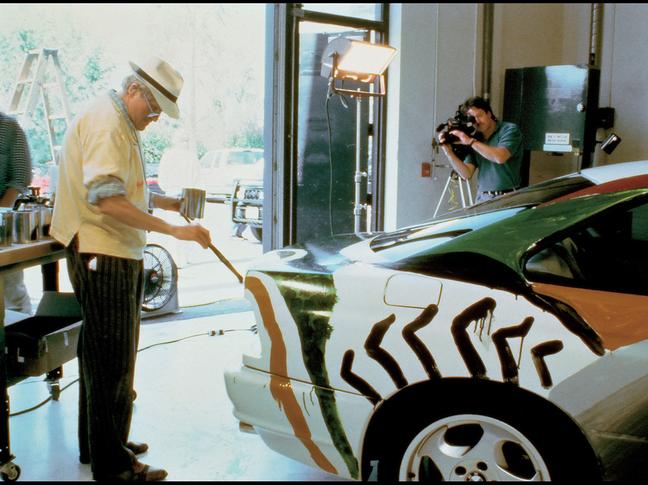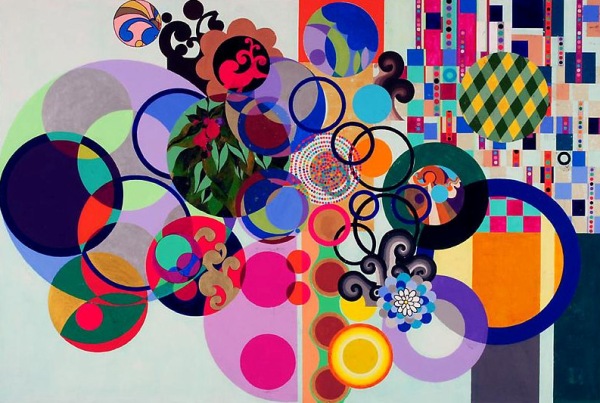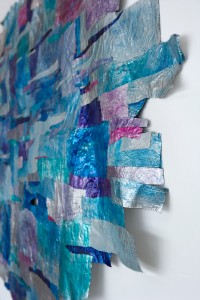5 Tips For Saving Money on Art Supplies
Recently, someone was watching one of my videos and commented on how much paint I was using to demonstrate. Many beginning painters and even more experienced painters on a tight budget can be very hesitant about using materials for fear of wasting them. I can SO relate to this feeling! If you’re one of these “Frugal Frannies” as I was, this video is for you.
Most of us can benefit from finding ways to save money, so I have some of my top tips. PLEASE share yours in the comments below.
1. Surfaces
The most common surface material for painting is stretched canvas. Buying the pre-stretched canvases is your most expensive option. Here are some alternatives:
- Canvas board: Canvas boards are canvas stretched over cardboard and come primed with gesso and ready to.
- Cardboard, heavy Bristol board or chipboard. Before painting, I would suggest prepping the surface with gesso.
- Wood: You can often get pieces of wood inexpensively at a lumberyard in their scrap bin. If you want to buy larger quantities, try Masonite or MDF board and have the large sheets cut to your preferred size on site.
- Heavy weight rag paper: Available at art supply stores. You may need to ask a sales associate to show you which papers are 100% rag. You will want to prep the surface with gesso before painting on paper.
2. Paint
There are many grades or quality levels of paints. Student grade paints are more economical but not all are created equal. If you are interested in learning more, you can watch my video on the 4 Different Types of Acrylic Paint. Two student grade paint brands I can suggest are:
- Liquitex Basics – get a lot of paint for your money with good pigment load.
- Windsor Newton Galeria – has a good pigment density
A quick note on housepaint because I often get asked about it – it’s not meant to last a long time and has less pigment but is ok for learning and practice.
3. Brushes
I have another video where I discuss different types of brushes. I strongly believe that if there is anything you are going to spend good money on, invest in good brushes. Poor brush quality can make paint hard to control.
4. Palettes
A lot of times beginners and students use disposable palettes. I don’t prefer these because of the impact on the environment and the fact that they actually get expensive because you keep having to replace the pad once you run out.
Another disposable material you can use is freezer paper that is found at most grocery stores. It’s the same material as the disposable palettes, but it’s a lot cheaper.
I prefer the butcher tray palette. It’s a metal tray covered in enamel. You can easily cover it and keep paints wet for future painting sessions. Please watch this video for more details.
5. Bargain shopping
Art supply stores often have “Back to School” sales. Look for these at the beginning of the school semester. Many stores also have coupons or coupon apps.
You might also try Ebay. In a quick search I was surprised how many acrylic paints came up. Just make sure that if you are purchasing from someone online that they have good reviews and accept returns. Garage sales and estate sales, thrift stores and reuse stores may also yield new or gently used art supplies.
Here are some resources for artists in the SF Bay Area:
Scrap 801 Toland St, San Francisco, California 94124 (enter on Newcomb)
East Bay Depot for Creative Re-Use 4695 Telegraph Ave. Oakland California USA
FabMo Designer fabric and samples for creative re-use 970 Terra Bella Avenue, Suite 5 Mountain View, CA 94043
I’d love to know: How do you save money on supplies? Please share your tips in the comments below!
Leave a Comment
How to Remove Dried and Hardened Paint from Your Paint Brushes
Assuming you take excellent care of your brushes – wiping them carefully, washing them in warm soapy water after each use, it’s still common for paint residue to build up around the ferrule* over time. I find many beginning acrylic painters just rinse their brushes in water after a painting session without using soap. The paint comes out, but the clear acrylic polymer stays in the brush so they look clean but the bristles dry stiff and the brush is unusable.
I used to think when oil or acrylic paint dried in a brush and it became hardened that it was a lost cause. I tried lots of things – soaking them overnight in soap or solvent, depending on whether the paint was oil or acrylic. I experimented with all kinds of specialized brush cleaning products such as Kiss-Off, the Masters, EZ-Air cleaner with limited success. The bristles were still stiff and some of the paint would come out but not all of it. I also tried to get dried acrylic out with the soaps many artists recommended such as Fels-Naptha, Murphy’s Oil Soap without success. Once a brush became hardened, I had to throw it out.
It wasn’t until Winsor and Newton came out with theirBrush Cleaner and Restorer ** that I found the perfect solution for reviving old brushes. What I really love about it is that it is environmentally friendly as it is both non-toxic and biodegradable. (But remember the paint and pigments you remove from the brush might not be, so once it is used, please dispose of it in your local Household Hazardous Waste facility.) I reuse the brush cleaner over and over by allowing it to stand in a clear glass jar. The pigment particles settle to the bottom of the jar and the liquid at the top can be poured off and reused for the next cleaning.
Here is a pdf the MSDS (Material Safety Data Sheet) for Winsor & Newton’s Brush Cleaner and Restorer.(On some computers the download will begin immediately. Please check your downloads folder.)
* Watch the video to find out what a ferrule is!
**affiliate link (By purchasing through this link you help support costs of running this website, email service, create videos etc.)
Have you ever had to throw out a brush that became too stiff to use? Do you have any hardened, dried up paint brushes? What are your solutions? Share your thoughts and tips in the comments section below!
Leave a Comment
How to Pack Light for Travel – Art Supplies
I will admit it. I am obsessed with packing light. Probably because I am on the road about 25% of the time the past few years and also because I’m mad for organization and streamlining. Don’t get me wrong, I’m not a minimalist. I like to have all I need, all the comforts, amenities and as many of the fashion options and conveniences of home on a packable scale.
That said, I have no desire to lug any 3 foot (1 metre) canvases or 32 ounce (1 litre) bottles of pouring medium with me on vacation so I do pare it down quite a bit for travel. I usually work on paper with paint or gouache when I travel so I have the satisfaction of working with a brush and wet media which I adore but in a far more portable format.
I made a video for you showing how I have edited down my travel art supplies and how I pack them so they fit neatly on the top of my 22″ rolling suitcase.
Here are some supplies to help you get started:
Mesh pouch
Windsor Newton Professional watercolor field box
Yupo paper 9” x 12”
What about you? Do you like to take art supplies with you when you travel? Do you keep it to a sketchbook? Or something more involved?
Leave a Comment
Food for Thought: David Hockney

“Any artist will tell you he’s really only interested in the stuff he’s doing now. He will, always. It’s true, and it should be like that”
– David Hockney
What about you? Are you only interested in the work you are currently involved with? Or do you tend to look back on older work? Do you ever feel the work you created in the past is stronger or better work than the work you are presently engaged in?
Do you cherish your older work in such a way that you have a hard time selling it because of your attachment to it?
How does this impact your getting your work out into the world? Do you ever delay sending out work because the next body of work will be even better?
Let’s get the conversation started! Please leave your comments below.
Leave a Comment
Remember How Much Fun Paint Can Be?
Do you remember the first time you painted? The pure joy of smushing paint about? The miracle of watching colors interact? The visceral thrill of seeing just what the stuff would do?
Sometimes, as we gain skills and get more “serious” about art, it’s easy to get caught up in outcomes and we forget just how fun paint can be as a material. But don’t you find that playfulness is often where you best “serious” discoveries occur?
Pouring with acrylics can take just about anyone back to that immediate delight of handling pure color. Here is a video to show you a basic technique with pouring :
But you ought to know there is SO MUCH more it can do! For instance, have you seen Brazilian painter Beatriz Milhazes’ exuberant canvas collaged with layers of acrylic sheets in eyepopping colors and forms?
Image courtesy of James Cohan Gallery
I created this piece using pouring medium and string gel combined. See my post here for video with details on how I did it.
Here is list of materials that I used that will help you get started:
Happy Painting!
Leave a Comment
How to Get Dried and Hardened Paint Out of Your Treasured Brushes
Assuming you take excellent care of your brushes – wiping them carefully, washing them in warm soapy water after each use, it’s still common for paint residue to build up around the ferrule* over time. I find many beginning acrylic painters rinse their brushes in water without using soap. The paint comes out but the clear acrylic polymer stays in the brush so they look clean but the bristles dry stiff and the brush is unusable.
I used to think when oil or acrylic paint dried in a brush and it became hardened that it was a lost cause. I tried lots of things – soaking them overnight in soap or solvent, depending on whether the paint was oil or acrylc. I experimented with all kinds of specialized brush cleaning products such as Kiss-Off, the Masters, EZ-Air cleaner with limited success. The bristles were still stiff and some of the paint would come out but not all of it. I also tried to get dried acrylic out with the soaps many artists recommended such as Fels-Naptha, Murphy’s Oil Soap without success. Once a brush became hardened, I had to throw it out.
It wasn’t until Winsor and Newton came out with their Brush Cleaner and Restorer that I found the perfect solution for reviving old brushes. What I really love about it is that it is environmentally friendly as it is both non-toxic and biodegradable. (But remember the paint and pigments you remove from the brush might not be, so once it is used, please dispose of it in your local Household Hazardous Waste facility.) I reuse the brush cleaner over and over by allowing it to stand in a clear glass jar. The pigment particles settle to the bottom of the jar and the liquid at the top can be poured off and reused for the next cleaning.
Here is the MSDS (Material Safety Data Sheet) for Winsor & Newton’s Brush Cleaner and Restorer.
* Watch the video to find out what a ferrule is!
Leave a Comment


